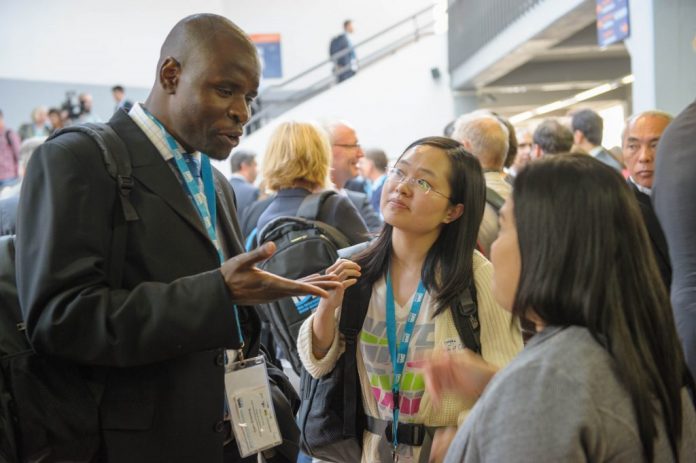By Karen Delfau*
Water managers across the globe, by the nature of our profession, face daily challenges and draw upon our own knowledge and experience to implement appropriate solutions. Hardly a week passes without a new study being released that articulates the dire state of global water resources. Recently, the American Geophysical Union released a study showing that by 2050, groundwater supplies for 1.8 billion people will be fully or nearly depleted because of excess pumping for drinking water or agriculture.
This is not unique, or even new. Every year the World Economic Forum releases its Global Risks Report, and for several years they have identified ‘water crises’ as one of the top ten risks facing our planet. Water risks are considered to be high and the impact severe, with knock-on effects in almost all areas of life.
The good news is that, where these potentially devastating challenges exist, there are technical and managerial solutions available to address them. Getting the right solutions to the places they are needed can, however, be problematic.
Linking people who have the solutions with those looking for them can be done through networks of professionals. Digital platforms, such as the IWA-Connect, SuSanA, or specialist Facebook and LinkedIn groups, increasingly play a central role facilitating networks that can be local or global. One approach being taken by the Kini Initiative is to leverage existing networks to share knowledge among practitioners in the Asia Pacific–a network of networks. This enables professionals to link directly with others who have faced similar issues and been able to tackle them effectively.
Knowledge in the fields of water resource management and Integrated Water Resource Management (IWRM), is often built through practice, and is strongly linked with contextual factors and personal experience. As a consequence, this knowledge can often be seen as abstract and difficult to articulate and access. This is where networks can be essential, as conversations flow in two directions, and knowledge and understanding can be shared and developed through dialogue.
Sharing and building upon practical knowledge for improved water management
To highlight the importance of this, it’s useful to distinguish between three types of knowledge in IWRM–prescriptive, discursive, and practical:
Prescriptive: best practice knowledge, where there are clear definitions of problems and solutions. IWRM plans, legislation, policies and procedural documents all are examples of prescriptive knowledge.
Discursive: frameworks for addressing conflicting values. UN-Water literature, World Water Development Reports, and International declarations are examples of discursive knowledge.
Practical: knowledge resulting from collaborative, on-ground interaction. Participatory planning processes, case studies, and evaluation reports represent the outputs from this kind of knowledge.
While prescriptive and discursive knowledge can be communicated well through published standards, reports and frameworks, practical knowledge is a more difficult nut to crack. Sharing lessons learned and strategic decisions made while implementing IWRM can be difficult to unpack in a way that fits neatly into these formats. Networks may prove to be a more fruitful way to share practical knowledge.
The benefits of sharing practical knowledge can be instrumental in solving complex challenges. Yet, all too often, practical knowledge remains stuck within organisations and never gets shared. Networks can be the catalyst that makes this type of knowledge accessible. When members of an on-line community have a common cause and personal interaction, they can build relationships and develop competences.
I use networks to test new ideas, to get feedback on reports, discover new knowledge, and to leverage networking opportunities at upcoming conferences. When the new Victoria Water Plan, Water for Victoria, was recently launched, I was impressed by the inclusive approaches it advocated, and with the dedicated funding that was promised to achieve its objectives. Through the International WaterCentre Alumni Network, in which I am active, I reached out to water managers in Victoria to get their perspectives.
Through this network, I learned Victoria also has innovative approaches to address climate change, and I was able to connect with key individuals to learn more. This is one of many examples of how networks, and developing connections with individuals in those networks, have helped me gain insight to new policies that otherwise I would not have learned about.
Through networks, water management practitioners can reach out to mentors and collaborators. We can track conversations and participate in discussions, and support one another without having to travel the world or even pick up the phone. We can debate new technologies and new approaches, and we can instantly connect with experts who can give us feedback and insight to guide how we engage in our work. So what’s preventing you from finding your network?









